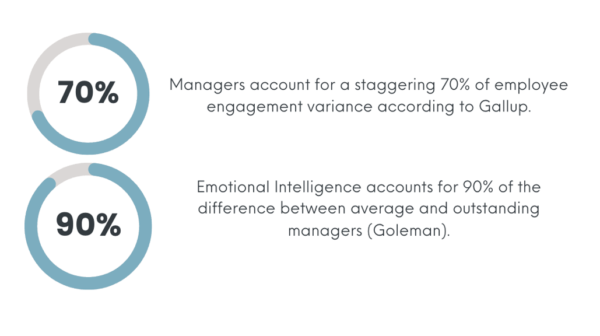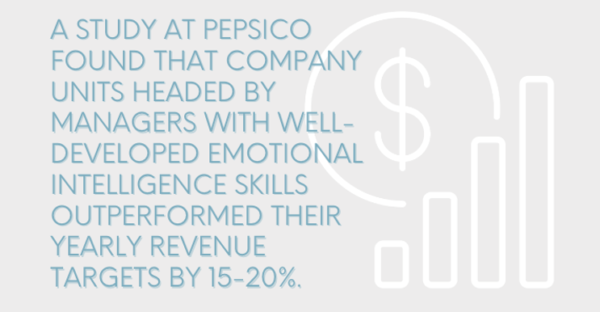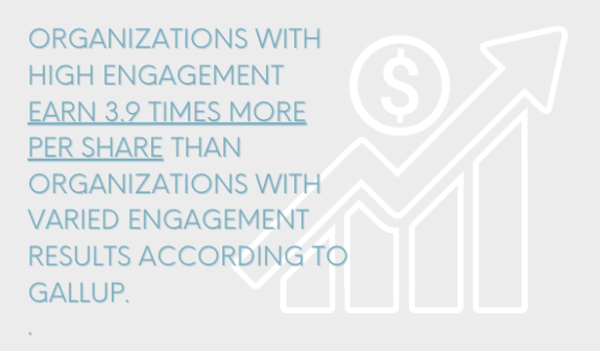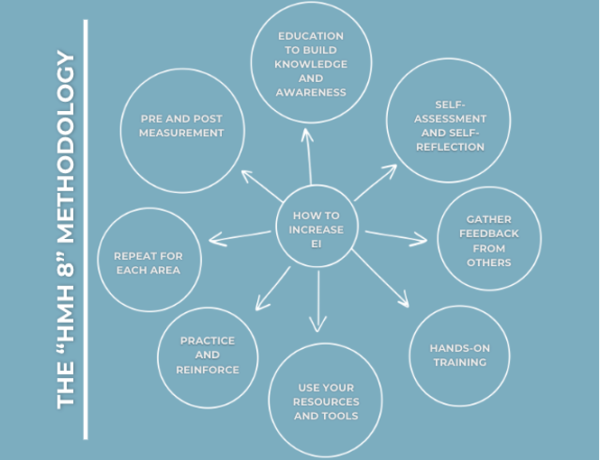Emotionally Intelligent Leadership
Mastering Leadership Through Emotional Intelligence
The Appleton Greene Corporate Training Program (CTP) for Emotionally Intelligent Leadership is provided by Ms Haygood Certified Learning Provider (CLP). Program Specifications: Monthly cost USD$2,500.00; Monthly Workshops 6 hours; Monthly Support 4 hours; Program Duration 12 months; Program orders subject to ongoing availability.

Personal Profile
Ms. Haygood is the Principal Founder and Chief Advisory Consultant of a leadership development firm focusing on emotional intelligence-driven development. An accomplished executive leader, she leverages her vast experience and knowledge to help others navigate the challenges all leaders inevitably face. Her passion for developing strong, emotionally intelligent leaders drives her to create tailored strategies that guide others toward achieving their full potential, fostering individual growth, and driving business performance.
Ms. Haygood is steadfast in her mission to elevate leaders, equipping them with the tools to create the organizational shifts necessary to provide foundations of trust, authenticity, and empowerment for themselves, their organizations, and the people they lead.
As a lifelong learner, she continually invests in training and certifications to ensure maximum impact when working with leaders and teams.
To request further information about Ms Haygood through Appleton Greene, please Click Here.
(CLP) Programs
Appleton Greene corporate training programs are all process-driven. They are used as vehicles to implement tangible business processes within clients’ organizations, together with training, support and facilitation during the use of these processes. Corporate training programs are therefore implemented over a sustainable period of time, that is to say, between 1 year (incorporating 12 monthly workshops), and 4 years (incorporating 48 monthly workshops). Your program information guide will specify how long each program takes to complete. Each monthly workshop takes 6 hours to implement and can be undertaken either on the client’s premises, an Appleton Greene serviced office, or online via the internet. This enables clients to implement each part of their business process, before moving onto the next stage of the program and enables employees to plan their study time around their current work commitments. The result is far greater program benefit, over a more sustainable period of time and a significantly improved return on investment.
Appleton Greene uses standard and bespoke corporate training programs as vessels to transfer business process improvement knowledge into the heart of our clients’ organizations. Each individual program focuses upon the implementation of a specific business process, which enables clients to easily quantify their return on investment. There are hundreds of established Appleton Greene corporate training products now available to clients within customer services, e-business, finance, globalization, human resources, information technology, legal, management, marketing and production. It does not matter whether a client’s employees are located within one office, or an unlimited number of international offices, we can still bring them together to learn and implement specific business processes collectively. Our approach to global localization enables us to provide clients with a truly international service with that all important personal touch. Appleton Greene corporate training programs can be provided virtually or locally and they are all unique in that they individually focus upon a specific business function. All (CLP) programs are implemented over a sustainable period of time, usually between 1-4 years, incorporating 12-48 monthly workshops and professional support is consistently provided during this time by qualified learning providers and where appropriate, by Accredited Consultants.
Executive summary
Emotionally Intelligent Leadership
Today’s employees are demanding better.
Turn the leaders you have today into the leaders you need tomorrow. Did you know that emotional intelligence (EI) accounts for a staggering 90% of the difference between average and outstanding managers? 90%!
According to Gallup, managers are the biggest drivers of employee engagement levels, accounting for 70% of employee engagement variance. Why is this important? Because happy, engaged employees are more productive, stay longer, and promote the brand. Employee engagement is the single lever a company can pull to impact business outcomes positively across the board… and emotionally intelligent leaders are how you get there.
To put that in perspective, when comparing employee engagement levels, Gallup found that the top- and bottom-quartile business units and teams had the following differences in business outcomes:
• 81% in absenteeism
• 58% in patient safety incidents (mortality and falls)
• 18% in turnover for high-turnover organizations
• 43% in turnover for low-turnover organizations
• 28% in shrinkage (theft)
• 64% in safety incidents (accidents)
• 41% in quality (defects)
• 10% in customer loyalty/engagement
• 18% in productivity (sales)
• 23% in profitability
It’s simple: Leaders drive engagement, and engagement drives all business outcomes.
Emotional intelligence is essential to cultivate leaders who can create the organizational shifts necessary to provide foundations of trust, authenticity, and empowerment. Emotionally intelligent leaders are crucial to increasing employee engagement and taking any company to the next level.
Historically, authoritarian leadership reigned supreme, where leaders displayed absolute authority, and the work environment mattered little. Authoritarian-driven fear breeds resentment and unhappy employees, creating disengaged employees who don’t willingly offer their employers support, much less their ideas. These employees feel stifled and are less productive. In today’s competition-rich economy, they leave for more aligned opportunities, thus increasing churn – costing companies countless dollars in time, resources, and profit while forcing a hit on their reputation.
On the other side lies leaders who practice high emotional intelligence and wield it as the powerful tool it is. Emotionally intelligent leaders elevate those around them, leading to impactful changes. At its core, emotional intelligence is about being smarter with our feelings. When we understand what we are feeling and are aware of those around us, we will increase our control, make better decisions, and perform consistently at a higher level. This intentional action equates to big wins in the workplace.
Historically hailed as the lynchpin of a strong leader was IQ. Thanks to a multitude of research and case studies over the past 30 years, it is becoming more widely understood that IQ accounts for only a small percentage of success. Studies showed as much as a 25 percent variance, with others contributing only 4% of an individual’s success to IQ. It’s not that IQ isn’t important; it most certainly is. However, we need to understand that individuals cannot make great leaders without emotional intelligence; in a way, the technical skills required are more entry-level, while emotional intelligence is essential to make a great leader.

Current Position
The saying “people leave managers, not jobs” has never been more accurate. Today, employees demand more and have more options than ever with virtual work. Companies that embrace emotionally intelligent workplaces are the ones that secure top talent… and retain it.
The focus on (and understanding of) emotional intelligence continues to grow. Trainings on EI consistently go to wait lists. They are one of the top business topics of today, with articles written on it receiving some of the highest views compared to other leadership articles written by the same outlet. Why?
Because emotional intelligence in the workplace is a game-changer.
High emotional intelligence is the lynchpin for leaders who empower their teams, demonstrate resiliency, lead through change, wield influence, drive results, and elevate the elusive workplace culture.
Awareness of the tremendous value of emotionally intelligent leadership continues to increase. Yet, there are still those clinging to their authoritarian ways, stifling employees at every turn and costing the companies that employ them in countless ways. Research has shown that an unhappy employee spends 60-70% of their time doing their job (although still most likely at a slower, less motivated pace than an engaged employee). So, what happens the other 30-40% of the time? That time is spent complaining to other co-workers, further driving down the collective employee engagement and often even looking for other jobs on company time.
So, how do you create a workplace where employees want to be? By employing and developing emotionally intelligent leaders.
Companies still need to look at all engagement factors, like compensating fairly and building in flexibility, but remember; managers are the number one contributor to employee engagement, the singular lever a company can pull to impact business outcomes across the board.
Leaders with high emotional intelligence possess the skillset to address the root of most problems companies face today. In difficult situations or barriers, emotionally intelligent leaders lead through the storm while simultaneously bonding with people. They can leverage a company’s most valuable resource, their people, and bring them to new heights!

The Program
This program enhances essential leadership skills by leveraging the power of emotional intelligence. Attendees gain the knowledge and tools to elevate their emotional intelligence and that of their teams to increase employee engagement and drive business outcomes.
In this process-driven program, attendees first learn and practice the foundation of emotionally intelligent leadership, from building self-awareness to leading authentically and empowering those in their charge. Part 1 also includes learning the art of influence and how to lead like a coach, teaching participants to adapt to individuals and situations to provide the appropriate level of support and guidance and take impactful action.
Once the foundation is built, part 2 focuses on driving business outcomes through a company’s common pain points. Monthly workshops will cover intentional communication, elevating employee engagement, building and retaining top talent, creating a synergetic team, leading people through change, embracing a strategic mindset, and promoting the customer experience.
Future Outlook
As companies look to the future, organizations that don’t prioritize elevating emotional intelligence in their leadership teams risk becoming obsolete.
Younger generations are less motivated by money; research shows they demand a better work environment instead. They appeal to be treated right and expect to be able to speak up and feel like they are being heard. In addition, with the rise of social media and websites like Glassdoor, keeping a poor culture under wraps is nearly impossible. Potential employees want to be informed and look far past a company’s shiny website – they want reality, and they’ll find it.
The importance and demand for emotional intelligence in the workplace continues to grow; the “Future of Jobs Survey 2020” by the World Economic Forum projected that emotional intelligence will be one of the top skills needed by 2025.
As we step further into the future, which now includes artificial intelligence in the workplace and our everyday lives, it is clear how emotional intelligence will become even more crucial to success. We, as humans, need to keep the things that make us uniquely human intact. We must retain and show empathy, build trust, display resilience, and hone our interpersonal skills. Emotionally intelligent leaders are a pivotal part of this as they extend that sense of belonging in the workplace and know how to form a real connection – this connection being the lynchpin you want to create to ensure people are happy at work and contribute positively to the bottom line.
As more and more companies embrace the emotionally intelligent workplace, companies tightening their grip on the authoritarian style will stand out like a sore thumb. They’ll watch their bottom lines dwindle, and if they are lucky, they’ll stay in business, but it’ll be a long, painful ride.
Emotional intelligence in the workplace is here to stay – it is needed, and it’s being demanded. Don’t get left behind.
Enroll today to help turn the managers you have today into the leaders you need tomorrow.
Curriculum
Emotionally Intelligent Leadership – Year 1
- Part 1 Month 1 Increasing Self-Awareness
- Part 1 Month 2 Leading Authentically
- Part 1 Month 3 The Art of Influence
- Part 1 Month 4 Empowering Those in Your Charge
- Part 1 Month 5 Leading Like a Coach
- Part 2 Month 6 Intentional Communication
- Part 2 Month 7 Elevating Employee Engagement
- Part 2 Month 8 Retaining Top Talent
- Part 2 Month 9 Creating a Synergetic Team
- Part 2 Month 10 Leading Through Change
- Part 2 Month 11 Embracing a Strategic Mindset
- Part 2 Month 12 Elevating the Customer Experience
Program Objectives
The following list represents the Key Program Objectives (KPO) for the Appleton Greene Emotionally Intelligent Leadership corporate training program.
Emotionally Intelligent Leadership – Year 1
- Part 1 Month 1 Increasing Self-Awareness – Self-awareness is the lynchpin to becoming an emotionally intelligent leader. This workshop will enhance attendees’ self-awareness and self-management, allowing them to be more intentional about how they lead. This increased awareness will improve their ability to handle stress and pressure in the workplace, resulting in improved decision-making skills and understanding of how their actions and behaviors impact others.
- Part 1 Month 2 Leading Authentically – Leadership without authenticity isn’t leadership at all. Authenticity in the workplace builds credibility and trust, which are essential to building and maintaining positive relationships. This workshop will teach attendees how to build credibility with their teams and other stakeholders, practice transparency with boundaries, express honest emotions to make connections and create a culture of trust and openness.
- Part 1 Month 3 The Art of Influence – Leadership influence is the most powerful and organic way to impact up, down, and across your organization. This workshop focuses on applying the art of influencing others to drive business outcomes, understanding the importance of supporting the shared vision, and practicing emotional reasoning and relationship management to persuade and influence others.
- Part 1 Month 4 Empowering Those in Your Charge – Attendees will learn to develop and empower their teams to elevate engagement and performance. This workshop will provide the knowledge and tools to delegate effectively by identifying the strengths and weaknesses of their teams, creating a culture of trust and collaboration where team members feel empowered to contribute their ideas and perspectives, and practicing how to identify and resolve barriers that prevent teams from thriving.
- Part 1 Month 5 Leading Like a Coach – The coaching leadership style closely mirrors situational leadership; both work with each unique team member to help them grow and succeed in their own way. While challenging to master, this leadership style increases team engagement and output. This workshop will improve essential leadership skills such as relationship management, awareness of others, empathy, and understanding of others’ perspectives. Attendees will learn to adapt to individuals and situations to provide appropriate support and guidance.
- Part 2 Month 6 Intentional Communication – Consistent and intentional communication helps foster an open and good rapport between leaders and their teams, executives, and cross-functional departments. This workshop will improve leader’s “up” executive communication, “across” department report outs, and “down” coaching conversations. Leaders will also be equipped with conflict-resolution skills and tools to provide constructive feedback.
- Part 2 Month 7 Elevating Employee Engagement – Employee engagement is the single lever a company can pull to impact business outcomes across the board; this lever, however, is highly complex to push in the right direction. This workshop helps leaders understand how to elevate the elusive workplace culture to increase employee engagement by consistently practicing emotionally intelligent leadership and developing a culture of trust, recognition, and appreciation.
- Part 2 Month 8 Retaining Top Talent – Developing and retaining top talent is proven to impact organizational-wide key performance indicators (KPIs). This workshop will equip leaders with tools to identify and address factors contributing to employee turnover, develop a culture that fosters growth and development, and understand the importance of work-life balance and how to implement strategies to support employees in achieving it.
- Part 2 Month 9 Creating a Synergetic Team – When a team is synergetic, the combined power and outputs of the team significantly increase, as opposed to the opposite effect of decreased productivity, efficiency, and engagement. This workshop equips leaders with skills they can implement to improve collaboration on their team, enhance problem-solving skills, and inspire creativity and innovation.
- Part 2 Month 10 Leading Through Change – Change management is known as “the people side of change,” but where companies get it wrong at times is leaning too much on outdated or inflexible change processes. This workshop combines the Prosci change management methodology with emotional intelligence to create a holistic framework to lead people through change successfully. Your leaders will learn the psychology of change, change management strategies and tools, where and what to do when resistance hits, and how to build a culture of change that can be embraced to support innovation, continuous improvement, and adaptability.
- Part 2 Month 11 Embracing a Strategic Mindset – Building a strategic mindset is essential for leaders who want to drive results. This workshop equips leaders with strategic thinking tools that help drive business outcomes and align organizational goals with individual and team goals, creating a unified approach to achieving success. Attendees will also learn how to create a culture of strategic thinking and continuous improvement that empowers employees at all levels to contribute their ideas and perspectives.
- Part 2 Month 12 Elevating the Customer Experience – Without customers, no business would exist. Leaders who support, develop, and empower their teams equip team members with the essential skills to provide exceptional customer service. This workshop is focused on ensuring leaders understand how to create a customer-centric culture within their organization, resulting in increased customer satisfaction, loyalty, and retention.
Methodology
Emotionally Intelligent Leadership
Emotional Intelligence (EI) accounts for a whopping 90% of the difference between average and outstanding managers (Goleman, 2005). With managers being the most significant direct contributor to employee engagement and engagement being the driving force behind achieving business outcomes – companies can’t afford to have managers with low EI.
But how does one increase emotional intelligence? Elevating this essential skill set is complex. It requires an intentional training program that builds understanding and buy-in. Hence, participants follow through, practicing and reinforcing the new behaviors as they understand the value and impact professionally and personally.
The Emotionally Intelligent Leader program uses the “HMH 8” methodology to drive impactful learning that results in noticeable behavior change, elevated personal growth, and business results.
This proven methodology lays the foundation of knowledge and awareness and targets specific skills and situations where attendees practice and reinforce the new behavior. The “HMH 8” methodology takes us through the following steps as part of this process-driven training program:
1. Deliver education to build knowledge and awareness: Knowledge is delivered in chunks to support the way adults learn. The program is structured intentionally to help create “ah-ha” moments and connections between concepts, solidifying learning and creating essential buy-in.
2. Self-assessment and self-reflection: The foundation of emotional intelligence is self-awareness, and to become self-aware, we must first slow down and reflect. This can be difficult for leaders, individuals who typically are high-achievers and go from one task to the next. This part of the program is essential to building a solid foundation and ensuring attendees can see themselves clearly in a non-judgmental way.
3. Gather feedback from others: Built into this program are pulse surveys to use as pre-and-post measurement tools and provide essential feedback to help attendees understand their self-assessment is accurate. Feedback provides information that will be used to target emotional intelligence work to the most impactful areas.
4. Hands-on training: This training program is intentionally designed as a workshop where attendees participate in interactive activities that keep them engaged in learning. The training then extends to the workplace, where attendees get homework to practice in their companies and with their teams using the processes and tools provided.
5. Use of intentional and impactful tools: Built throughout the training program are process-driven resources and tactical tools for attendees to take and utilize in their day-to-day work environments, significantly increasing the success and impact of the training.
6. Practice and reinforce: Like anything, we must practice and support a new behavior if we expect it to stick – emotional intelligence is no different. The program is designed for attendees to practice and continually reinforce the learned behaviors in themselves and those they lead.
7. Repeat for each area: Emotional intelligence is not one thing; it’s many things that help us be more thoughtful and more intentional with our feelings, understand those around us, and take that information combined with other facts and information to make better decisions. Each area’s steps must be repeated to elevate the attendee’s overall emotional intelligence.
8. Measurement: Pre-and-post pulse surveys are built into the training program to allow sponsoring companies to see tangible progress in their leader’s emotional intelligence levels, drawn from feedback from their unique company. These surveys can be an excellent measuring tool for the company’s investment.
Industries
This service is primarily available to the following industry sectors:
Technology
The technology industry has been one of the most significant contributors to the global GDP over the past few decades, contributing roughly 2 trillion, or 9.3%, to the overall GDP in 2022 alone. With the advent of the internet, smartphones, and other technological advancements, the industry has grown exponentially, and its impact on the economy has been substantial.
Technology is one of the most dynamic industries in the world, with innovations and advancements coming to market yearly. The sector comprises various sub-sectors, including software, hardware, telecommunications, and e-commerce, where the most prominent corporations in the industry have become household names, like Apple, Microsoft, Amazon, Alphabet, and Facebook. These companies are among the world’s largest and most influential corporations. They have achieved impressive growth rates and enormously impact the global economy.
Apple is the largest company in the world by market capitalization, with a market value of over $2 trillion. It is known for its popular iPhone, iPad, and MacBook products. Microsoft is another tech giant that dominates the software industry, with a market cap of over $1.6 trillion. Conversely, Amazon is the world’s largest online retailer and cloud computing company, with a market cap of over $1.5 trillion. Alphabet, the parent company of Google, is valued at over $1.2 trillion and is the world’s largest search engine and online advertising company. Lastly, Facebook is a social media giant with a market cap of over $800 billion, connecting billions worldwide.
These companies significantly impact the economy, providing employment opportunities and generating massive revenues. They also drive innovation and technological advancements, shaping the future of industries such as healthcare, education, and transportation.
The evolution of the technology industry can be traced back to the introduction of the personal computer in the 1970s. This invention revolutionized how people worked and communicated, paving the way for further technological advancements. The emergence of the internet in the 1990s further propelled the industry’s growth, with the Internet becoming a primary means of communication and commerce.
Over recent years, the industry has grown unprecedentedly, with technology becoming essential in everyday life. E-commerce has transformed how people shop, and mobile devices such as smartphones and tablets are a staple for professional and personal life. Further accelerating the growth was the COVID-19 pandemic, forcing millions of people to work and study from home, further increasing demand for laptops, webcams, and other technology-related products, significantly boosting the industry’s growth.
The technology industry’s contribution to the global GDP, expected to continue to rise in the coming years, cannot be understated. The sector creates millions of jobs globally, with some of the most sought-after jobs. It has transformed how people work, communicate, and shop and will likely continue to play a significant role in shaping the global economy in the years to come.
Education
The education industry has significantly contributed to the overall GDP of many countries, including the United States. According to a National Center for Education Statistics (NCES) report, the education industry contributed $709 billion to the US economy in 2018. This figure has continued to grow as the industry evolves and expands. The education industry encompasses many sectors, including primary, secondary, and tertiary education, vocational training, and adult education. It plays a vital role in providing individuals with the knowledge and skills necessary to succeed in the workforce and contribute to the growth of their respective economies.
One of the prominent corporations in the education industry is Pearson, a British multinational publishing and education company. Pearson has a strong presence in the US market, providing educational materials and services to students from kindergarten to higher education. The company’s revenue in 2022 was over $4.75 billion, with a significant portion coming from the US market. Another notable corporation in the industry is Blackboard, a software company that provides learning management systems to educational institutions. Blackboard has over 20 million users worldwide, including students and educators, resulting in a healthy revenue in 2022 of approximately $700 million.
The education industry has evolved significantly over recent years, driven by technological advancements and changing student needs. Online learning has become increasingly popular, with many educational institutions offering online courses and degree programs. This has led to the rise of online education providers such as Coursera and Udacity, which offer a wide range of online courses from top universities worldwide.
Another trend in the industry is the focus on personalized learning. Many educational institutions are adopting new technologies and teaching methods to provide students with customized learning experiences tailored to their needs and interests. This has led to the rise of adaptive learning platforms such as Knewton, which uses artificial intelligence to provide personalized learning experiences to students.
The industry has also seen increased private investment in recent years. Venture capital firms are investing in education technology startups, providing them with the funding they need to develop innovative products and services, leading to new players in the industry, such as AltSchool and Edmodo, which offer new approaches to teaching and learning. Private investments have the potential to drive innovation and improve the quality of education through startups that leverage the latest technologies like AI, machine learning, and virtual reality to create engaging and interactive student learning experiences. Private investments are also helping to fund research and development in education, which is critical for improving the effectiveness of teaching methods and curricula. Overall, these private investments are pivotal in driving innovation in the education industry and improving the quality of education for students.
Despite these advancements, the education industry has challenges. One of the biggest challenges is the rising cost of education, which has led to a growing student debt crisis in many countries. Educational institutions are under pressure to find new ways to reduce costs and provide affordable education to students. Despite its challenges, the education industry continues to grow and innovate, positively contributing to many countries’ overall GDP.

Energy
For years, the energy industry has long been a critical driver of economic growth and a large contributor to the overall GDP. The energy sector, from oil to natural gas, is vital in powering the world’s economies. In the United States alone, the energy industry accounted for 5.7% of the country’s GDP in 2021.
ExxonMobil, Chevron, and BP are three of the world’s largest oil and gas companies and have played a significant role in the evolution of the energy industry. These companies have invested heavily in research and development, exploration, and innovation, leading to groundbreaking advancements that have transformed the industry. ExxonMobil is the largest of the three, with a market capitalization of over $250 billion, followed by Chevron, with over $200 billion market cap., and BP, the smallest of the three, still coming in with an impressive market capitalization of around $100 billion. Looking at annual revenues, ExxonMobil reports over $230 billion, followed by Chevron with yearly revenues of over $160 billion, and BP has annual revenues at around $80 billion. These companies significantly impact the global economy, with operations in multiple countries and employing thousands of people. However, their environmental and climate change impact is also a concern for many.
The energy industry has undergone significant changes in recent years, primarily driven by the increasing demand for renewable energy sources and the need to reduce greenhouse gas emissions. This has increased focus on developing sustainable and eco-friendly energy sources such as wind, solar, and geothermal. The push towards renewable energy has also led to the emergence of new players in the industry, such as Tesla, which has revolutionized the electric vehicle market and is working to develop new battery technologies that will make renewable energy more accessible and affordable. Despite these changes, traditional energy sources such as oil and natural gas play a significant role in the global economy. The International Energy Agency estimates that oil and gas will still account for 50% of the world’s energy supply in 2040.
One of the significant challenges facing the energy industry is achieving a balance between meeting the world’s energy needs and reducing greenhouse gas emissions. The industry is under increasing pressure to adopt more sustainable practices and reduce its carbon footprint, with many countries implementing policies and regulations to reduce emissions.
This has led to a renewed focus on research and development, with companies investing in new technologies such as carbon capture and storage, which could help reduce emissions from fossil fuel power plants. Developing new energy storage technologies, such as advanced batteries and hydrogen fuel cells, also promises to reduce the industry’s reliance on fossil fuels.
In conclusion, the energy industry continues to be a crucial component of the global economy, with traditional energy sources such as oil and gas playing a significant role alongside emerging sustainable energy sources such as wind, solar, and geothermal power. Prominent corporations such as ExxonMobil, Chevron, and BP have driven the industry’s evolution, investing heavily in innovation, research, and development. New players like Tesla are changing the game, focusing on renewable energy and advanced battery technologies. As the industry evolves, it will be critical to balance meeting the world’s energy needs and reducing greenhouse gas emissions with continued investment in research and development and sustainable and eco-friendly energy sources.
Healthcare
The healthcare industry has long been a crucial component of the economy; it is a vital industry that provides people with access to healthcare services that they need to live healthy, fulfilling lives. In the United States, healthcare spending accounted for a whopping 17.3% of GDP in 2022 and is projected to rise in the coming years. This growth can be attributed to several factors, including an aging population, advances in medical technology, and increased public awareness of health-related issues.
One of the most prominent corporations in the healthcare industry is Johnson & Johnson, a multinational company specializing in medical devices, pharmaceuticals, and consumer health products. With a market capitalization of over $400 billion, Johnson & Johnson is a leader in the industry, known for its innovative products and dedication to patient care.
Another major player in the healthcare industry is Pfizer, a pharmaceutical company that has been instrumental in developing numerous life-saving drugs. Pfizer has a market capitalization of over $200 billion and employs over 80,000 people worldwide. The company has been at the forefront of medical research for decades, developing drugs to treat various illnesses and diseases. Roche also ranks in the top three as the third-largest healthcare company, with a market capitalization of around $190 billion. Roche is a pharmaceutical and diagnostics company headquartered in Switzerland and is known for developing innovative drugs and diagnostic tests for cancer and other diseases.
These companies significantly impact the economy, as they are significant employers and contribute to the GDP of many countries. They also invest heavily in research and development, which leads to the creation of new drugs and medical technologies that can improve the lives of millions of people. Additionally, these companies often work with governments to provide healthcare services to needy people, particularly in developing countries. Overall, the impact of these three companies on the healthcare industry and the global economy is expansive.
The healthcare industry has recently undergone significant changes, with new technologies and treatments transforming how patients receive care. One of the most significant developments has been the rise of telemedicine, which allows patients to receive medical consultations and treatment remotely. This has been particularly important during the COVID-19 pandemic, as many people were unable or unwilling to visit doctors’ offices or hospitals.
Another trend in the healthcare industry has been the shift towards value-based care, which emphasizes the quality of care rather than the quantity of services provided. This approach has improved patient outcomes while reducing costs, making it an attractive option for healthcare providers and insurers. Despite these advances, the healthcare industry still faces numerous challenges, including rising costs and access to care. Some experts have called for more government intervention to address these issues and ensure all Americans access affordable, high-quality healthcare.
The bottom line is the healthcare industry is vital to the economy. Prominent corporations such as Johnson & Johnson, Pfizer, and Roche are at the forefront of medical innovation, developing new treatments and technologies that improve patient outcomes. However, the industry also faces significant challenges, including rising costs and access to care. Addressing these issues and ensuring all Americans have access to the care they need will be essential as the healthcare landscape evolves.

Construction
The construction industry in the United States alone accounts for approximately 6% of the total GDP. Prominent corporations in the sector include Bechtel Corporation, Fluor Corporation, and Whiting-Turner Corporation. These corporations have had a significant impact on the industry, and their contributions have helped to shape its evolution over recent years.
Bechtel, Fluor, and Whiting-Turner are three of the largest construction companies in the United States. Bechtel is the largest and has been in operation since 1898. The company has over 50,000 employees and generates over $21 billion in annual revenue. Fluor is another major player in the construction industry, with more than 53,000 workers and generating over $19 billion in yearly revenue. Whiting-Turner, though smaller than Bechtel and Fluor, is still a significant player, employing over 5,000 people and generating over $6 billion annually.
These construction companies directly impact the economy, providing jobs for thousands of people and contributing to developing critical infrastructure projects. Bechtel, for example, has been involved in constructing infrastructure projects such as airports, railways, and power plants. In contrast, Fluor has made substantial oil and gas facilities. Whiting-Turner has built diverse projects ranging from hospitals and universities to airports and sports arenas. Their work creates a ripple effect that touches the construction industry and the broader economy.
Over the past few years, the construction industry has seen a significant evolution. One of the most significant changes has been the shift towards sustainable construction practices. Many companies now focus on reducing their environmental impact by using environmentally friendly materials and implementing energy-efficient practices. This shift towards sustainable construction has helped to reduce the industry’s carbon footprint and has had a positive impact on the environment.
Another change in the construction industry has been the increased use of technology. Many companies are now using advanced technology to improve efficiency and productivity. For example, drones are now being used to survey construction sites, reducing the need for manual labor and enhancing safety. Building Information Modeling (BIM) has also become widespread, allowing architects and engineers to create 3D models of buildings and structures, reducing the risk of errors during construction.
The construction industry has also seen an increase in collaboration between companies. Many companies are working together to complete large-scale projects, sharing resources and expertise to ensure that projects are completed on time and within budget. This collaboration has helped improve the overall quality of construction projects and positively impacted the industry.
Despite the construction industry’s evolution, the sector still faces significant challenges. One of the most critical challenges is the need for more skilled labor, which continues to be more pressing as younger generations opt for white-collar jobs and the industry veterans are aging out. Many companies need help finding qualified workers, leading to delays and increased costs. Additionally, the industry faces increased competition from other sectors, such as technology and finance, which may impact its long-term growth.
Locations
This service is primarily available within the following locations:

New York City, New York
New York City, also known as the Big Apple, is one of the world’s most iconic and well-known cities. With a population of over 8 million people, it is the most populous city in the United States. Various industries, including finance, technology, media, and entertainment, drive the city’s economy. In 2022, the city’s GDP was estimated to be over $2.1 trillion, making it one of the most significant contributors to the US economy.
The finance industry has been one of New York City’s most prominent economic drivers. The city is home to the New York Stock Exchange, the world’s largest stock exchange by market capitalization. Many of the world’s largest financial institutions, including Goldman Sachs, JPMorgan Chase, and Citigroup, are headquartered in the city. The finance industry in New York City employs over 300,000 people and generates billions of dollars in tax revenue for the town.
Another significant industry in New York City is the technology sector. The city has become a hub for technology startups, with companies like Etsy, BuzzFeed, and Squarespace all calling the city home. The city has recently attracted significant technology companies, such as Amazon. The technology industry in New York City employs over 120,000 people and generates billions of dollars in economic activity each year.
The media and entertainment industry has significantly impacted the city’s economy. The city is home to many of the world’s largest media companies, including Time Warner, Viacom, and NBCUniversal. The city’s thriving theater district, which includes Broadway, generates billions of dollars in revenue each year and attracts millions of tourists to the town. The media and entertainment industry employs over 300,000 people by itself.
In recent years, New York City has undergone significant changes and evolution. The city has become more diverse, with an influx of immigrants worldwide. This diversity has contributed to the city’s vibrant culture and helped drive innovation and creativity in the city’s many industries. The city has also become more environmentally conscious, with initiatives such as the PlaNYC sustainability plan, which aims to reduce greenhouse gas emissions and improve air and water quality.
The city has also undergone significant infrastructure improvements in recent years. The construction of the Second Avenue Subway and the extension of the seven trains to Hudson Yards have improved transportation options for residents and visitors alike. The redevelopment of areas such as the Hudson Yards and the Brooklyn Navy Yard have also created new economic growth and development opportunities in the city.
In conclusion, New York City is a global economic powerhouse with a diverse economy driven by finance, technology, media, and entertainment. The city’s GDP is one of the largest in the world, and its many industries employ hundreds of thousands of people and generate billions of dollars in economic activity each year. The city has undergone significant changes and evolution in recent years, becoming more diverse and environmentally conscious while improving its infrastructure and creating new opportunities for growth and development.
Los Angeles, California
Los Angeles, California, is a city that needs no introduction. Known for its beaches, Hollywood, and vibrant culture, LA is also a large contributor to the United States economy, making it a hub for innovation and progress. With a population of over 4 million, it is the second-most populous city in the country and contributes significantly to the overall GDP.
Los Angeles is a bustling city with a diverse economy driven by various companies and sectors. The entertainment industry is one of the most prominent contributors to the city’s economy, with major studios like Universal, Paramount, and Warner Brothers calling Los Angeles home. The city also has a thriving technology industry, with companies like Google, Snapchat, and SpaceX setting up shop in the area. With still more notable companies in various industries, including aerospace, fashion, and healthcare, calling LA home. These industries collectively contribute to the city’s economy and make Los Angeles a hub for innovation, creativity, and growth.
Los Angeles has deep roots. The Walt Disney Company, one of the largest media conglomerates in the world, was founded in LA in 1923. It employs over 200,000 people and generates billions of dollars in revenue annually. Another notable corporation that originated in LA is the Mattel toy company, which has created iconic toys like Barbie and Hot Wheels.
LA has undergone significant changes recently, transforming into a more diverse and welcoming city. The city has a thriving arts scene, with galleries and museums showcasing works by established and up-and-coming artists. LA also has a booming tech industry, with Silicon Beach attracting startups and established companies. These developments have brought a new level of prosperity to the city and made it a destination for innovation and creativity.
Another significant change in recent years has been the focus on sustainability and environmentalism. LA has been making substantial investments in public transportation infrastructure, such as expanding the Metro Rail system, which has helped reduce emissions and improve air quality. The city has also implemented a range of initiatives to promote green energy, such as the LA 100 plan, which aims to transition the city to 100% renewable energy by 2045.
Despite these changes, however, LA still faces significant challenges. The city has a high cost of living, and income inequality remains an important issue. Homelessness is also a pervasive problem, with over 75,000 people experiencing homelessness in the city. These issues have prompted tremendous efforts to address them, such as creating the Los Angeles Homeless Services Authority, which provides housing and support to those in need.
Los Angeles is a city that has evolved significantly in recent years, becoming a hub for innovation, creativity, and progress. Its prominent corporations, thriving arts scene, and focus on sustainability have helped it to become a significant contributor to the overall GDP. However, it still faces substantial challenges, such as income inequality and homelessness, which require ongoing efforts to address. LA remains a vibrant and exciting place to live, work, and visit, and its continued development and progress promise a bright future for this iconic city.

Phoenix, Arizona
Phoenix, Arizona, is a city that has seen tremendous growth and evolution in recent years. With a population of over 1.6 million people, Phoenix is the fifth largest city in the United States, and it is also the capital of the state of Arizona. Phoenix is a significant player in terms of its contribution to the overall GDP of the United States. It is the 13th largest metro area in the country and has an economy worth over $250 billion.
The tech industry is one of the most significant contributors to Phoenix’s economy. The city is home to several prominent tech companies, including Intel, which employs over 10,000 people in the area. Intel has been a significant contributor to Phoenix’s economy for over 30 years, with a 2022 annual revenue of $63 billion. The company has invested billions of dollars in the region, creating thousands of high-paying jobs and driving growth in various industries. Other tech companies with a significant presence in Phoenix include Apple, PayPal, and Yelp. These companies and many others have helped make Phoenix a hub for innovation and technology, contributing significantly to the city’s overall economic growth.
Another important sector of the economy in Phoenix is healthcare. The city is home to several large hospitals, including the Banner Health System, one of the city’s largest employers. Healthcare is a growing industry in Phoenix, with many new hospitals and medical facilities being built in recent years to keep up with the city’s growing population.
In addition to these industries, Phoenix is also home to many other large corporations. These companies include American Express, Bank of America, and Wells Fargo, all of which have a significant presence in the city. These companies and others contribute to the city’s overall economic growth and provide many jobs to the people of Phoenix.
The evolution of Phoenix in recent years has been quite remarkable. The city has increased in terms of its population and economy. One of the most significant changes in Phoenix in recent years has been the development of its downtown area. The city has invested heavily in its downtown development, constantly building new restaurants, shops, and entertainment venues. This has helped make downtown Phoenix a vibrant and exciting place.
Another critical change in Phoenix recently has been the city’s focus on sustainability. Phoenix is located in the desert, and water is a precious resource. Phoenix has invested heavily in water conservation and recycling to ensure that the city has a secure water supply for the future. The city has also made significant investments in renewable energy, with many new solar and wind power projects being built in the area.
Phoenix, Arizona, is a city that has seen tremendous growth and evolution in recent years. Its contribution to the overall GDP of the United States is significant as the city is home to many prominent corporations, particularly in the tech and healthcare industries. With its strong economy and commitment to innovation, Phoenix is a city poised for continued growth and success in the years to come.

Denver, Colorado
Denver, Colorado, is a vibrant city that has experienced significant growth in recent years. The city has become a hub for business, tourism, and innovation, contributing to the overall GDP of the United States. The Denver metropolitan area had a GDP of $249 billion in 2022, mainly from the healthcare, technology, finance, and energy industries.
Denver, Colorado, is a thriving hub for businesses across various industries. Among the largest companies in the city are Ball Corporation, Newmont Mining Corporation, and DaVita Inc. These companies significantly impact the economy of Denver and the state of Colorado. Ball Corporation, a metal packaging company, is headquartered in Broomfield, a suburb of Denver. With over 18,000 employees worldwide, Ball Corporation is one of the largest employers in Colorado. The company’s presence in the state has brought in significant revenue and investment, boosting the economy.
Newmont Mining Corporation is a global mining company. The company’s headquarters are in Greenwood Village, a suburb of Denver. Newmont is one of the world’s largest gold producers, creating numerous jobs in Colorado. Moreover, the company’s operations have contributed to the growth of the mining industry in the state.
DaVita Inc., a healthcare company, is headquartered in Denver. The company provides kidney care services and has over 70,000 employees worldwide. Another prominent corporation in Denver is the telecommunications company Comcast. The company’s western division headquarters are in Denver, employing over 7,000 people in Colorado. The company has invested heavily in the city, including a $10 million renovation of its downtown headquarters in 2019. These companies, among others, significantly impact the city and state economies. Their presence has brought in investment, created jobs, and contributed to the growth of various industries.
In recent years, Denver has undergone a significant evolution. The city has become a hub for innovation and entrepreneurship, leading to a booming startup scene. The city’s central location and access to top talent have made it an attractive destination for companies looking to establish a presence in the western United States. This growth has been fueled by various factors, including a highly educated workforce, favorable tax policies, and a supportive business environment.
In addition to its thriving business community, Denver has a vibrant arts and culture scene. The city is home to various museums and galleries, including the Denver Art Museum and the Museum of Contemporary Art. The city also hosts various festivals and events throughout the year, including the Denver Film Festival and the Great American Beer Festival.
Despite its many successes, Denver faces various challenges as it continues to evolve. One of the city’s biggest challenges is the issue of affordable housing. As the city has grown, housing prices have skyrocketed, making it difficult for many residents to afford a place to live. The city has taken steps to address this issue, including creating an affordable housing fund and establishing a task force to explore solutions to the problem.
Denver, Colorado, is a city that has seen significant growth in recent years. Its contribution to the overall GDP of the United States is substantial, and its diverse range of industries and prominent corporations have made it an attractive destination for businesses and entrepreneurs.
Dallas, Texas
Dallas, Texas, is a city that has rapidly evolved in recent years. It has become a prominent economic and cultural hub of Texas and the United States. The city’s contribution to the country’s GDP is significant, totaling $688 billion in 2022, equating to 3% of the country’s overall GDP.
Dallas, Texas, is home to some of the most prominent and influential companies in the United States. AT&T, Southwest Airlines, and Texas Instruments are just three examples of companies that have had a significant impact on the economy in the region. These companies have provided thousands of jobs to Dallas residents and have contributed to the growth of the city’s economy. The Dallas-Fort Worth metroplex is home to over 20 Fortune 500 companies and has been ranked the fourth-largest employment center in the United States.
AT&T, one of the largest telecommunications companies in the world, reporting 2022 revenues of over $122 billion, is headquartered out of downtown Dallas. The company has been a significant employer in the area for decades, providing thousands of jobs to residents. Southwest Airlines, another major employer, has its headquarters at Dallas Love Field Airport. The airline has been a staple of the Dallas community since its founding in 1971. Finally, Texas Instruments, a technology company specializing in semiconductors and integrated circuits, has its headquarters in Dallas. The company is a leader in the tech industry and has been instrumental in developing new technologies that have profoundly impacted the world.
These three companies have helped shape the Dallas economy, providing jobs, driving innovation, and contributing to the region’s growth. Their impact on the city and the state cannot be overstated.
Another factor that has contributed to the city’s success is the development of its downtown area. In recent years, the city has invested heavily in revitalizing the downtown area, attracting new businesses, and creating a vibrant cultural scene. The Dallas Arts District is one of the largest urban arts districts in the country, featuring museums, theaters, and galleries. The city’s food scene has also been gaining recognition, with numerous acclaimed restaurants opening up in recent years.
Furthermore, Dallas has become a hub for innovation and entrepreneurship. The city has been ranked as one of the top cities for startups and small businesses, with a thriving startup ecosystem. The city’s innovation district, located in the West End Historic District, is home to several tech companies and startups working in fields such as artificial intelligence, blockchain, and cybersecurity.
However, Dallas has faced its fair share of challenges recently. The city has struggled with issues such as income inequality and racial segregation; the city has tried to address these issues and promote inclusivity and diversity with initiatives like “GrowSouth,” which aims to promote economic growth and development in the southern part of the city, where many low-income residents live.
Dallas, Texas, has become a prominent economic and cultural hub in recent years, significantly contributing to the country’s overall GDP. The city’s success can be attributed to the presence of several prominent corporations, the revitalization of the downtown area, and the development of a thriving startup ecosystem. While the city has faced its fair share of challenges, efforts have been made to promote inclusivity and diversity. Dallas is undoubtedly a city that is evolving rapidly and is poised to continue its growth and success in the years to come.
Program Benefits
Leadership
- Self-Awareness
- Increased Empathy
- Authentic Communication
- Greater Adaptability
- Credibility
- Empower Others
- Transparency
- Relationship Management
- Situational Leadership
- Influential Leadership
Human Resources
- Increased Collaboration
- Boost Engagement
- Improved Accountability
- Trust Culture
- Spark Innovation
- Positive Environment
- Reduced Conflict
- Emotional Reasoning
- Conflict Resolution
- Reduced Turnover
Finance
- Improved Efficiency
- Decreased Cost
- Talent Retention
- Customer Loyalty
- Change Management
- Strategy Execution
- Increased Profitability
- Better Alignment
- Reduced Conflict
- Improved Reputation
Achievements

Custom Development Program
Built and deployed a custom development program for a client company designed to transform the leaders they have today into the leaders they need tomorrow. Throughout the program, participants were challenged to develop new leadership skills and hone existing ones through classroom learning, practical exercises, and one-on-one coaching sessions.
The training helped participants understand the importance of emotional intelligence, effective communication, collaboration, and strategic thinking in today’s business environment. They also learned to identify and develop the strengths of their team members, empowering them to achieve their full potential.
As a result of the program, the organization saw marked improvement in leadership quality across all departments. Team cohesion has increased, decision-making is more strategic, and employees are more engaged and motivated to succeed. Overall, the custom development program was a critical success factor in driving the organization forward and has positioned it for continued success in the years to come.

University Partnership
Partnered with a university to build an emotionally intelligent leadership course for professionals in the local area; it was a successful strategy to expand the reach and impact of this essential training for leaders across industries.
Emotional intelligence is becoming increasingly important in the workplace, and leaders who possess these skills are better equipped to navigate complex situations, build strong relationships, and inspire their teams. By working with a university, a wide variety of organizations could tap into the latest research and expertise in emotional intelligence and, if desired, have tailored training programs built to meet their unique needs.
This program helped leaders develop the skills and competencies needed to succeed in today’s fast-paced and ever-changing business environment, leading to improved performance, higher employee engagement, and a more positive workplace culture.

Customer Training Program
Developed a custom training course targeted at how to build connections in the workplace. The training was a resounding success, with participants reporting numerous benefits that have positively impacted their personal and professional lives.
The training focused on developing communication skills and strategies that allow individuals to connect with their colleagues deeply, build trust, and foster a supportive work environment. It also included an essential callout to the “silent connection killer” that leaders and teammates should avoid to prevent erosion of trust.
Employees who participated in the training reported feeling more comfortable and confident in their interactions with others, resulting in better relationships and improved teamwork. The training has proven to be an invaluable tool in creating a more positive and productive workplace culture.

Coaching
Implemented a collaborative and personalized coaching approach that helped individuals identify their strengths and weaknesses, get laser-focused on their ideal state, and assist them in taking achievable, aligned steps to reach their desired goals.
One of the critical benefits witnessed was improved self-awareness. By gaining a deeper understanding of their strengths and weaknesses, individuals could leverage their strengths better and address areas for improvement. This led to increased confidence, better decision-making, and improved performance.
Individuals also developed better communication and interpersonal skills, essential for success in their leadership roles. By learning to communicate more effectively, build stronger relationships, and inspire others, individuals became more effective leaders and achieved further career success. Overall, the investment by individuals and companies to elevate careers showed a significant return on investment.

Consulting
Provided employee life cycle consulting work for a client company, strengthening their foundation by creating a framework to provide clear expectations, accountability, and a total rewards system. This approach included a full employee life cycle review and employee interviews, ensuring no assumptions on gaps and pain points were made. This work also helped ensure employees understood what was expected at different career stages, from onboarding to performance management to career development.
The review deliverable included a roadmap for the company that identified areas of improvement, where they were doing well, and essential gaps that must be filled. The roadmap targets the highest impact areas while providing employees with a sense of purpose and belief in the company’s direction. Post implementation, higher employee engagement, and increased business performance were achieved.
More detailed achievements, references and testimonials are confidentially available to clients upon request.
Client Telephone Conference (CTC)
If you have any questions or if you would like to arrange a Client Telephone Conference (CTC) to discuss this particular Unique Consulting Service Proposition (UCSP) in more detail, please CLICK HERE.






















